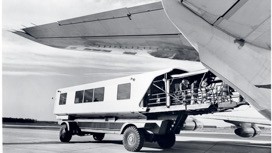|
|
 |
 |
|
Christchurch and District Model Flying Club
Sloping Off - our newsletter
|
 |
 |
|
LEST I FORGET, by Ken Spokes
final instalment
|
 |
 |
|
- At work in the early 60s, I transferred to a new section which had been set up to handle the application of computers in Air Traffic control. Aircraft movements were rapidly increasing and there was an urgent need to provide improved facilities for overburdened Controllers. Knowing virtually nothing about computers much time was initially spent attending programming and data processing courses with various manufacturers and at night school. I had entered the digital era.
- My first job was associated with the installation of a Ferranti Apollo computer at the Redbrae Control Centre in Scotland which handled the flow of North Atlantic air traffic. It was then “state of the art”, was housed in three large cabinets and probably had the processing power of a fraction of today’s laptop Its task was to print Flight Progress Strips which had previously been prepared by hand and to predict possible infringements of aircraft separation standards. This was by way of a prototype installation which was later followed by more advanced systems at the Southern and Scottish Air Traffic Control Centres, The work was interesting and enjoyable and involved regular meetings with other European Agencies seeking to introduce similar systems. Frequent air travel was usually by Caravell or Trident Although I never experienced any incidents, I must admit that I was always uneasy when the Trident landed blind through heavy overcast with the Autoland system continually adjusting the engines to keep the plane on the glide-path. On such occasions, the first sight of the ground would be seconds before touchdown.
- In the late sixties, I was once more on the move and joined a section dealing with the provision and installation of radar facilities. Air Traffic Control (ATC) at this time was mainly “Procedural” based on aircraft verifying their position by radio at designated reporting points on airways thereby enabling the Controllers to build up a “picture” of traffic by means of flight progress strips.
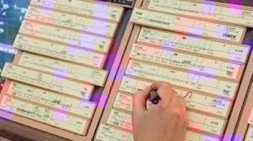
- With clear indications that air traffic would continue to rise in the foreseeable future, planning was now directed towards providing Controllers with enhanced radar facilities whereby aircraft could be viewed on bright screens and positively identified in terms of position, heading and height. .However, before this goal could be achieved much research and development was needed particularly regarding Secondary radar (SSR) ,a system based on wartime IFF. My first task was to set up .an experimental unit at Heathrow in order to investigate the precise nature of SSR transmissions and much data was gathered and assessed. We were not alone in this work and had valuable help and from the Royal Radar Establishment (RRE) at Malvern. Also, there was international cooperation and information exchange particularly with the American FAA, and Eurocontrol (European Upper Airspace Control). We had numerous foreign visitors including a group of engineers from the USSR. They arrived with an interpreter and their political “Minder” With the “Cold War” very much in evidence, they were permitted only technical discussions – positively no socialising. Meetings with the RRE at Malvern sometimes involved an overnight stay when there was an opportunity in the light evenings to climb the hill where more often than not, I would find a group of R/C glider enthusiasts enjoying slope soaring. It was a wonderful site with multi aspects and magnificent views.The SSR system required a Transponder to be fitted to all civil aircraft which when interrogated by a ground based radar would reply with a message providing identity, altitude and position. Since aircraft flew worldwide it was essential that the specification for this unit and the data format used was internationally agreed. The forum for such agreement was through the offices of the International Civil Aviation Organisation (ICAO), a specialised agency of the United Nations. The offices of ICAO were based in Montreal where I was delegated to attend meetings on behalf of the UK. This was something completely new to me and it was with some trepidation that I boarded a Boeing 707 at Heathrow for my first international meeting and visit to North America. In the event, all went well as everyone was most helpful and after the first few sessions I quite enjoyed the experience.
- In 1972 , the aviation interests of the Ministry of Transport and Civil Aviation transferred to the newly established Civil Aviation Authority (CAA) and moved to new offices in Space House, Kingsway. Many of the senior staff at that time were ex-RAF with a wartime operational and technical background Most notable was probably Douglas Bader who was with us for a short time. I never had the chance to speak to him, but once stood next to him in the lift. Such is my claim to fame. Another, was Lettice Curtice, the well known ATA ferry pilot My immediate boss was in the RAF pr-war and I was chatting with him once ,when he mentioned that he flew radio controlled planes in the late thirties.. I thought he was joking, but It turned out that he was attached to a unit flying the Tiger Moth “Queen Bee” gunnery target aircraft.
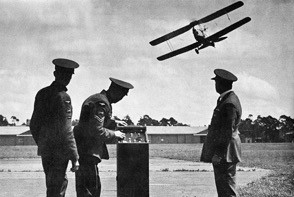
- I wish that I had been able to record my conversation with him, since he described in some detail the control systems used and his experience operating the aircraft. Hitherto, radar information for ATC had only been available on a local basis but plans were in hand for total countrywide coverage. This would require establishing a chain of long range radars relaying their information to the various Control Centres.
- For the next few years, I became increasingly involved with this work and correspondingly my air miles mounted as frequent visits were made to the USA and Europe to collaborate progress with others working in this field. Fortunately by this time, I was entitled to first class travel which eased the pain on long-haul journeys Also, travel arrangements became flexible to the extent that on trans-atlantic flights, one way would be permitted on Concord provided the return was economy This was an experience not to be missed and at the first opportunity I was booked on a flight from Heathrow to Washington,Dulles.
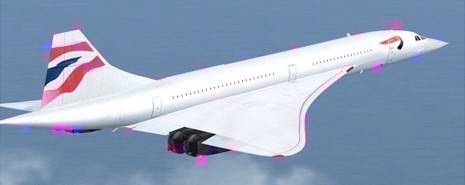
- My Concord “experience” started at the special check-in desk followed by a wait in the Concord lounge where refreshments were served and coats taken aboard on a hanger trolly, On entering the cabin, my first impression was how small it seemed with seating for one hundred passengers in pairs either side of a central walkway. My window seat at the front of the cabin was black leather, extremely large and comfortable with loads of leg room. I have never had a seat like it in a plane before or since. Departure was early evening and the initial climb-out was breathtaking The route taken was over Southern Ireland when up to that point the speed was sub-sonic. Once land was cleared, it was announced that the speed would increase to Mach two accompanied by a climb to a cruising altitude of sixty thousand feet. Looking out of the window at this height, the curvature of the earth could clearly be seen. Also, I was surprised to find that the window was quite hot to the touch. A large display at the front of the cabin showed the Mach speed during the flight. Following a superb meal, I presented my cockpit pass and was shown to the flight deck and happily chatted to the crew for half an hour or so. As we were traveling faster the earth’s rotation, I had the unique experience of watching the sun rise in the West. The flight lasted about three and a half hours and for some reason, on that occasion I suffered no jet lag during my stay in America.
- Arrival at Dulles was always an interesting experience transferring from the aircraft to the terminal in huge mobile lounges. The contrast returning “economy” couldn’t have been greater but was suffered gladly.
- Visits to America were often accompanied by trips to various Air Traffic Control Centres and radar installations. These were usually arranged by the FAA and because of the distances involved, the journeys were usually taken in one of their fleet aircraft which was an assortment of twin piston types including a DC3 which in earlier life t had been the personal transport for General ‘Hap’ Arnold in WW2
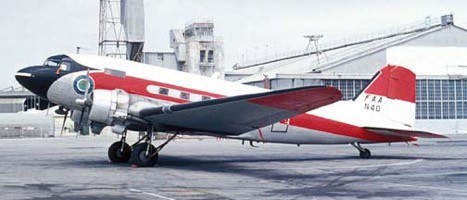
- An engraved plaque in the cockpit commemorated the fact. It was in beautiful condition as was to be expected and I felt privileged to fly in it on a trip to Atlanta, then to Jacksonville and back to Washington . On boarding, I was surprised how steep the gangway was, how cramped the cockpit seemed and in flight, how noisy it was We trundled along at 200Kts and at only a few thousand feet, enjoyed the countryside rolling past. We called in at Elgin USAF base to refuel and as soon as we came to a standstill were immediately surround by a crowd of people admiring the “old bird”. Time spent in the co-pilot’s seat was an added bonus. I enjoyed every minute of it.
- By happy coincidence, one of my FAA contacts was a keen Radio Control flyer and on several visits, I was invited to stay at his home in Virginia. He belonged to a local Club and at weekends, if the weather was fine, we would drive to their field for a few hours flying. This seemed to be in the middle of nowhere – no houses, no trees, nothing as far as you could see. It had a well mown strip, pit area, flight line, BBQ with tables and benches, and a play area for children. Flying was well controlled and all in all was a great set-up. It was usually very well attended with probably twenty or thirty flyers plus family members. Interesting to see how others do things. On other occasions, we would make the rounds of the local model shops. These were well stocked with prices generally much lower than at home. I was usually tempted to buy something I didn’t really want although K&B engines were the exception as these were excellent and great value. On one visit, I picked up a copy of the American RC Modeler and was so impressed that I became a regular subscriber until its recent demise. In my opinion, it was one of the best RC magazines ever produced. Each issue was packed full with informative articles,hints and tips and superb plans ideal for enlarging.The covers were good too.
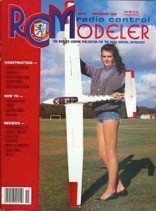
- One of the few “perks”of the job was a day out with a pass to visit the Farnborough Air Show. This was for a day midweek when it was less crowded with the added bonus that during the morning, one was free to wander around all the aircraft on display. The CAA usually had a stand in one of the halls displaying some aspect of Air Traffic Control. Despite my earlier experience at the show, I rarely missed a year.
- By the late seventies, I was appointed Director of Air Traffic Services and was responsible for the planning, procurement and installation of all UK civil radar systems. A major task at this time was the management of the “UK Radar Replacement Project” which involved updating old radar installations and providing a chain of new radars countrywide together with the associated display facilities at Air Traffic Control Centres.
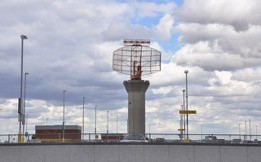
- The component parts were many and varied and involved contracts with firms in the UK, Germany, Holland, Sweden, Norway and the USA. which meant a great deal of travel and time away from home Armed with my trusty cockpit pass, many hours were spent on the flight deck of a variety of commercial airliners. Visits to remote installations in the UK such as Tiree, Stornoway and the Orkneys were usually made by hiring a small executive twin which provided flexibility and reduced traveling time These flights were most enjoyable as they were usually flown at relatively low altitude.. An added bonus was they often came with a well stocked bar. I was pleased to see the project through to a successful completion before my retirement in 1986 and have a constant reminder whenever I see the radar tower at the Heathrow tunnel exit.
- During this time, I still managed to do some model building and flying and being only a few minutes from the Downs flying site was a boon. Living in a world of nostalgia. I had been a member of the Society of Antique Modelers (SAM ) for some time and had made a couple of “Oldtimers” which I had long admired. One was a Buzzard Bombshell and the other a Super Buccaneer, popular in the nineteen thirties .and forties. Originally they were free flight models powered by petrol engines but were now fitted with early four-stroke Glo-motors and radio assist. .Both were flown at Old Warden SAM events. The Buzzard was sold long ago but the Buccaneer has recently been refurbished, electrified and fitted with a dummy Baby Cyclone engine, replicating the original model.
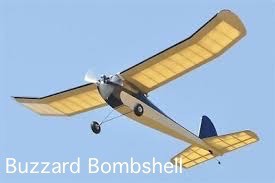
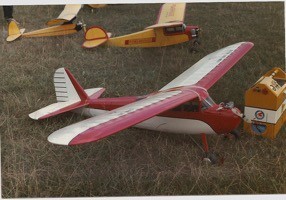
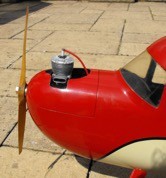
- Modeling materials were usually obtained from Mick Charles excellent well stocked shop in nearby New Malden. He was a renowned scale builder and many of his amazing models were to be seen on display. My office was in Space House ,Kingsway and occasionally at lunch time I would take a short tube ride to Henry Nicoll’s shop at 308 HollowayRd which was then a “Mecca” for London modelers. Whatever was new in the model and R/C world was sure to be found there. Henry was an early pioneer in radio control and was often featured in the model magazines at the time. Each year, I religiously visited the Model Engineer Exhibition to admire the beautiful models on display and to stock up with tools and materials from the many trade stands. On two occasions I entered models for display and was delighted when one was awarded “Very Highly Commended”
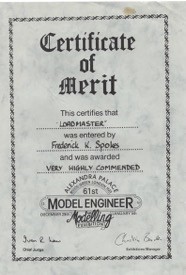
- A big advantage of retirement was that I could now fly on the Downs midweek when relatively few people were about. Quite a large area was regularly mown and most fine afternoons a group of similarly retired gentlemen could be found well dug in with chairs and flasks. There was usually more chatting than flying The radio controlled models we were flying at that time were almost without exception, powered by four stroke Glo engines. Models were also increasing in size and whereas previously sixty inch wingspans were the norm, wingspans of seventy or eighty inches were now quite common. One particular model I enjoyed flying, was a Chuck Cunningham design, Lazy Ace.
- Gliders were usually powered by small diesel engines with run time governed by the tank size. Electric power was just starting to become a viable alternative to the IC engine but usually, only for gliders. My first electric powered glider was built from a Graupner Mosquito kit

- and had an excellent performance. It was powered by a brushed motor which could be remotely switched on or off in flight by means of a relay unit connected to the receiver throttle channel. This was a home build designed and constructed by David. Illustrated are some examples of units he made. His career was now well established in electronics and having worked in Canada with CAE and in Germany with Messerchmitt (could I ever have imagined a son of mine working for Messerchmitt?) he was back in the UK between jobs looking for something to occupy himself. He was very experience with microprocessors and still with an interest in model aircraft, wondered how their use might enhance R/C systems which at that time ( early nineties ) offered little beyond the basic control functions although newer sets were beginning to appear incorporating features such as servo reversing, throw adjust, dual rates and mixing. After much thought, it was decided that a programmable unit located in the model between the receiver and servos could perform these and a host of additional features previously unavailable.. An added attraction was that owners of older sets could upgrade and be offered over twenty specific functions. In addition to those mentioned above, processing would compensate for signal loss or interference with adjustable failsafe plus a memory for three model configurations, a receiver battery voltage monitor, an Integral relay providing on/off switching for add-on devices, an audible receiver switched-on reminder after three minutes of system inactivity, lost model audible alarm, audible channel monitoring, and more. All of this was packaged in a unit the size and weight of a 35 Mhz receiver together with a small control panel for mounting externally on the model A prototype was built and exhaustively bench tested and when all seemed to be working satisfactorily it was time for flight trials. It was installed in a tried and tested model and taken to Epsom Downs where it finally took to the air. All functions seemed to perform faultlessly, so it was on to the next step of getting it into production and offering to the modeling fraternity.This, however, was easier said than done as it involved sourcing materials, preparing documentation, making jigs, testing and overcoming a host of unforeseen problems. Eventually it was launched under the name of “Remote Management System” (RMS).and we were pleased to see that it received very favorable reviews in the model press. We were kept busy by a steady flow of orders, none more notable than from Dr Jeremy Shaw of the L:MA who installed units in his Stranraer flying boat and his huge Canadair Dash-7.Sometime later we were surprised to be contacted by Dave Abbey of RCD who was an agent for Hitec R/C in America. He was very interested in the unit and wished to promote it there. He was based in San Diego and invited us to fly out to discuss possible arrangements. This was a totally unexpected development which we thought worthwhile looking into and quickly took up his offer .After a long and tiresome flight, he met us at the airport and offered hospitality at his home during our visit. His workplace was a warehouse on the outskirts of the city where Hitec imports were stored awaiting shipment to hobby shops and customers.. The outcome of our meeting was that we would make the units and ship them to him in batches as demand required. The only significant change he wanted was that the name of the unit should be called a Master Onboard Multi-mix or MOM for short.. He gave some thought to this, thinking ahead to the advertising. He was known as Dave Abbey Developments ( DAD ) and his striking full page ads in the American model magazines read “ For total control, be like DAD take MOM on board”. We were more than happy to go along with this as he even offered to supply the labels. While we were there, he kindly took us to visit a local club and to a workshop making large models for the film industry. We also visited the San Diego aero museum and to a spot along the coast whale watching. Sorry to say, we didn’t see any! On our departure we were each presented with a set of the latest Hitec equipment which we found on our return, was set-up on the American R/C frequency and unsuitable for use in the UK It was an interesting interlude which didn’t exactly make our fortune but it did however ,result in a number of contacts which proved very useful in Dave’s future career.. Also In passing it, was pleasing to note that no units were ever returned for repair, malfunction or complaint. I think he did a wonderful job.
- A surprise birthday present at this time, was a flight in a Tiger Moth

- which took place at Nottingham Airport. I had no idea that Nottingham had an airport which sounded very grand. In the event, it turned out to be a busy Flying Club field with a variety of small aircraft coming and going. After booking in with Truman Aviation, I was introduced to the chief flying instructor who asked if I had any piloting experience. I mentioned that I had done a little bit of gliding many years ago with the ATC and that my hobby was flying R/C model aircraft. Hearing this, he seemed quite happy that I should try my hand at piloting the aircraft once we were airborne rather than just be a passenger As there was no voice communication, he explained the hand signals he would give for some basic manoeuvres and most particularly when he would take over. It was a lovely sunny day and after some anxious moments when the engine refused to start, we were soon taxiing over the bumpy grass to the far side of the field for a surprisingly short takeoff. After flying over Nottingham and along the M1 for a while, I received the signal to start piloting. I remember imagining that I was flying a large full scale model with me in it. All movement of the controls gave the reaction I had expected and I was pleased to find that I could make quite reasonable turns, climbs and descents but as with my models, I had to work harder to make a decent turn to the right than to the left. All too soon, it was time to return to the airfield and watch with envy, how my instructor made the approach and perfect landing seem so easy. I discussed my right turn problem with him afterwards and he assured me that pupils often had a hangup with a particular manoeuvre but with plenty of practice ,it was usually sorted out. A great experience which I very much enjoyed and would recommend to all like aviation persons. As Dave had taken us to the airfield and watched me disappear into the blue, we were fortunately able to arrange for him to have a similar flight in the Tiger Moth. Before leaving we were both presented with certificates which read :- “ This is to certify that the person mentioned below being of sound mind, was hereby cajoled into taking a Flying Lesson and did successfully piloted a DH82A tiger Moth at Nottingham Airport, With undying admiration from your Instructor.” Mmm.

- For some time we had been thinking about moving to the South Coast. While on holiday with our caravan at Brockenhurst, we chanced on a housing development in New Milton that was in the early stages of development. It was just what we had been looking for and quickly reserved a plot. We sold up at Tadworth, put all our worldly goods in storage and spent an idyllic year roaming the Continent in our caravan awaiting our house to be built. Meanwhile, my modeling activities had been put on hold but not forgotten as I kept in touch through the purchase of various French and other foreign R/C magazines. Model shops were frequently browsed which were usually very well stocked and presented.
- Once settled in our new home, I was pleased to learn that there was a well established model flying club in nearby Christchurch and lost no time joining. It was well run with regular meetings, specialist talks and competitions and had about a hundred members. I was surprised to find that it was very much biased towards electric powered models which had seemingly become amazingly efficient since my period away from the hobby. This was due in no small measure to the development of brushless motors and Lipo batteries. The power to weight ratio of this combination now seemed to rival that of the i/c engine. Due to the silent nature of electric models a number of local playing fields, recreation grounds and parks were available for model flying where previously engine noise had prevented their use. .
- Most of my fleet of models had survived the move and storage but almost without exception were I/C powered Flying I/C powered models involved traveling some distance to a disused airfield at Beaulieu where part of the old runway was used for take off and landings. It was a well attended site attracting flyers from all over the area. I enjoyed my flying sessions there but not so much the traveling involved. I now gave serious though to converting my models to electric power or where this was unsuitable, to start from scratch and build new models to permit local flying. I found ready buyers on Ebay for my engines including my vintage collection. Sad to see them go as I really enjoyed playing with the noisy, dirty, smelly things.
- I have always enjoyed drawing and sketching and when evening art classes for beginners were advertised locally in Christchurch I joined for a winter session. The tutor was very good and over the period, covered many of the basics techniques. Being mechanically minded. I was not too keen painting flowers and still objects but perked up when tuition in airbrushing was offered. Naively, I thought it would be relatively easy ,but this was not the case and I found it very frustrating trying to achieve the results I wanted. I made slow progress but found it an interesting digression from model building.



- After a while, I joined the Club Committee and for several years served as joint Treasurer and Membership secretary. Having now been on three various Club Committees, I never cease to be amazed at how much hard work and devotion the elected members contribute to keep their Club running smoothly. I sometimes wonder if they are truly appreciated. As the years roll by, i find that I am increasingly spending more time building rather than flying. Any piloting skills that I may have had are disappearing fast and that I seem to be regressing to a beginner stage. Perhaps I should get a good simulator and make a resolution to go to the flying field more often.
- PS
- During a visit to a local Antiques Fair, I spotted a complete set of pre-war Players “Aircraft of the Royal Airforce” cigarette cards which I couldn’t resist buying. This was the self same set that I had collected as a boy and really was a trip down memory lane. LookingI through them,I only managed from memory to name twenty four types correctly. Three are not named. With the exception of the Walrus, the flying boats had me completely foxed. How many can you name? (Answers on request)
-

|
|



